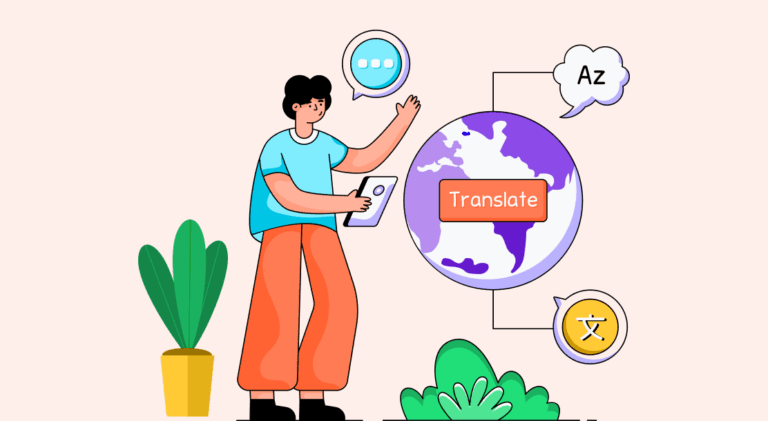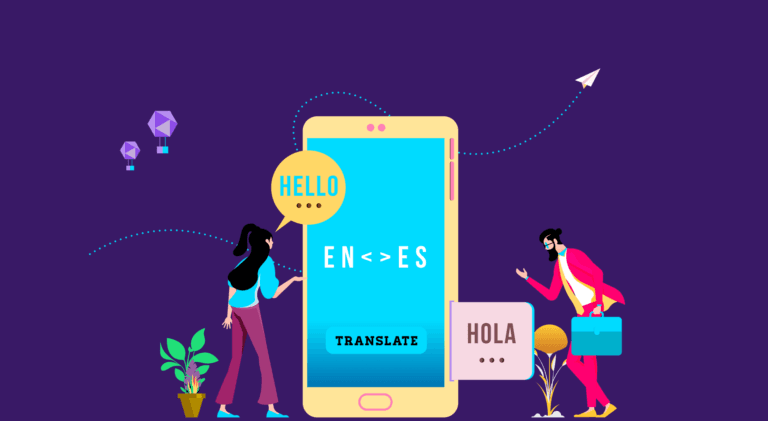Marketing Translation: A Challenge And An Opportunity

Table of Contents
- The Opportunity In Marketing Translation
- Marketing Translations vs. Other Translations
- The Challenges Of Marketing Translation
- Meeting The Marketing Translation Challenge
Marketing translation is the adaptation of marketing materials into different languages. The languages involved here are the source and target language/s. If you translate from English to Hindi, German, Dutch, and French, the source language is English, and the target languages are Hindi, German, Dutch, and French.
The definitive quality of marketing translation is that it is meant to be persuasive. And persuasion is done differently in different cultures. This is the challenge of marketing translation. Marketing translation is also done for various media. The challenge here is to stay true to the spirit of that media within the nuances of the target language/s.
Some of the media involved in marketing translation are as follows:
- Brochures
- Posters
- Product descriptions
- Product packaging
- Press releases
- Presentations
- Social media posts
- Website copy

Digital marketing translation is gaining importance within the larger field of marketing translation. To cater to this need, digital marketing agencies now offer specialist digital marketing translation services. If you choose to use the services of a marketing translation company, you should know more about the nature of marketing translation, and this is what we will cover in this blog.
The Opportunity In Marketing Translation
Marketing translation presents an excellent opportunity for companies. Here are some of them:
1. It raises your brand awareness.
Marketing translation enables more prospective customers to know about your brand. As your marketing content interacts with customers in their preferred language, they know more about your products and services. Marketing translation can impact goodwill and brand value positively.
2. It increases customer satisfaction.
Because marketing materials are best understood in the customer’s target language, they engage with your business as empowered customers. They also face fewer problems. This results in a better customer experience.
3. It reaches more customers.
Many customers don’t speak the source language. By communicating in local target languages, your brand can reach more customers.
4. It reduces support costs.
Marketing translation minimizes miscommunication. This leads to fewer customer complaints and support tickets. Fewer support tickets mean reduced customer support costs.
5. It helps with SEO.
Digital marketing translation directly boosts SEO rankings by targeting search engine algorithms.
Marketing Translations vs. Other Translations
Marketing translations differ from other translations. As mentioned earlier, a defining feature of marketing translations is the need to persuade. This gives rise to inherent differences in the procedure of translating marketing materials. The end product differs, too.
The verbatim translation of a slogan from the source to the target language may not persuade audiences. What’s needed is a translation of the ability to persuade (in terms of language). Sometimes what is persuasive in one language may be offensive in another.
Another difference between marketing and other translations is the audience size. A marketing billboard may be seen by hundreds of thousands of prospects daily. In comparison, a medical translation may be seen only by patients visiting a hospital.
This means marketing translations are in the public eye, while you may control who reads your legal/medical and other translations. Because of this, it is imperative to create effective marketing materials with no aberrations. You can ensure this by hiring a specialist marketing translation company.

The Challenges of Marketing Translation
When you see the world of digital marketing translation, you are often met with downright funny translations. One famous example is Pepsodent’s launch in Southeast Asia. Pepsodent tried to persuade clients to “Whiten their teeth.” They didn’t consider that locals in that area chewed betel nuts to blacken their teeth. Black teeth were their target market’s goal.
Another interesting example of marketing translation done wrong was the GM Chevy Nova launch in South America. The company didn’t consider that Nova meant “It won’t go” in the local tongue. What we learn from these examples is that marketing translation is not straightforward. If done wrong, it can do more harm than good.
Here are the everyday challenges of marketing translation:
1. Structural language differences
There are thousands of languages worldwide. Each has its structure, syntax, expressions, and quirks. Because of this, every language is unique. To express one language in the words of another is a challenge. English is read from left to right — quite the opposite of Arabic. English and Spanish have very different rules for syllable separation.
2. Differences in culture
Every culture understands the world differently. An American may need help understanding how a Chinese can comfortably consume dog meat. An Indian may not understand how Americans eat beef regularly. These differences impact how a marketing message is conveyed in foreign cultures. Working with a marketing translation agency is a great way to bypass the marketing headaches of entering foreign markets.
3. Differences in humor
Marketing messages thrive on humor. However, humor is subjective to geography. What is funny in Namibia may be frowned upon in England. Also, idioms are difficult to translate. This brings to life the concept of localization along with translation.

4. Imagery and colors
The meaning of colors and imagery differ across cultures. Black may signify power in one culture and evil in another.
5. Content adaptation
Legal and medical translations are translated as-is, with no poetic license. Translated marketing materials are often substantially different from the originals. The key here is that the translated material must resonate with the audience. You need to adapt the content to the values of the new culture.
6. Selecting the right team
One of the critical issues in marketing translation is selecting the right team. You need to consider factors like industry experience and skill set. Rather than creating an in-house team, using the marketing translation services of a specialist agency are one easy option here.

Meeting The Marketing Translation Challenges
To meet the challenges of marketing translation, keep seven things in mind:
1. Define your goals.
In defining your goals, answer the following questions:
- What is the purpose of the marketing translation?
- What resources will you allocate?
- What methodology will you use?
- How will you define the success of your marketing translation efforts?
2. Understand the multi-faceted nature of marketing translation.
There are many facets to marketing translation. It involves localization and transcreation.
- In localization, you translate marketing materials to adapt to local contexts.
- In transcreation, you create new marketing materials to fit new markets.
3. To create the best marketing materials, you may have to iterate repeatedly.
When using the marketing translation services of a local translator or an agency, look out for the following:
- Expertise
- Portfolio
- Rates
- Experience
4. Start with automated translation.
One approach is to use automated translation as a first step. Then the translation can be fine-tuned using human translators.

5. Translate based on your brand image.
Marketing translations are wholly dependent on the brand image. What you convey must be in line with your brand’s perception. If your brand is bold and loud, it should reflect in your translated material. The humor, jargon, examples, and idioms from the target to the source language should align with your brand image. Sometimes a digital marketing translation may require you to change the look of your website to fit in with the message conveyed.
6. Translate based on culture.
Every culture has different beliefs. Marketing translation should take those beliefs into account. Don’t feature a thumbs-up in a Middle-Eastern advertisement. It has negative connotations. Don’t market a clock as a present in China. In this culture, they sometimes symbolize impending death.
7. Get feedback through marketing research.
Feedback is an essential part of the marketing cycle. Use the services of an agency to learn where your marketing is working and where to improve it. Sometimes companies roll out their translated marketing material in a test market. If it is successful, they roll it out in the larger market.
In the End
Although marketing is continuously evolving, some things remain the same. General marketing principles often apply to marketing translation. However, the globalized market is still a new concept.
Success in the global village requires trial, error, and a touch of genius. In marketing translation, employing a marketing translation agency may tilt the scales in your favor. Use this article as a reference and turn the challenge of marketing translation into an opportunity.
FAQs
Marketing translation aims to connect with customers and drive profits across linguistic markets.
Implement the principles of marketing translation mentioned in this article or hire an excellent marketing translation company.
You need to be conversant with both target and source languages. Also, you must be an expert marketer.
Yes, definitely.
Yes, done right, marketing translation pays far more than it costs.
Latest Blogs
Explore how Google’s 2025 AI search updates triggered ranking chaos. Learn actionable strategies to adapt your SEO for AI Overviews, zero-click searches, and SERP volatility. Stay ahead now.
Learn how to rank on AI search engines like ChatGPT, Perplexity, and Gemini by optimizing your content for authority, structure, and relevance. Stay ahead in AI-driven search with this strategic guide.
Explore the best healthcare SEO services for your medical practice. Improve online visibility and effectively reach more patients in need of your services.
Get your hands on the latest news!
Similar Posts

Translation
5 mins read
All You Need to Know About Language Translation and Terminology Management

Translation
5 mins read
6 Reasons to Translate Content into German

Translation
5 mins read